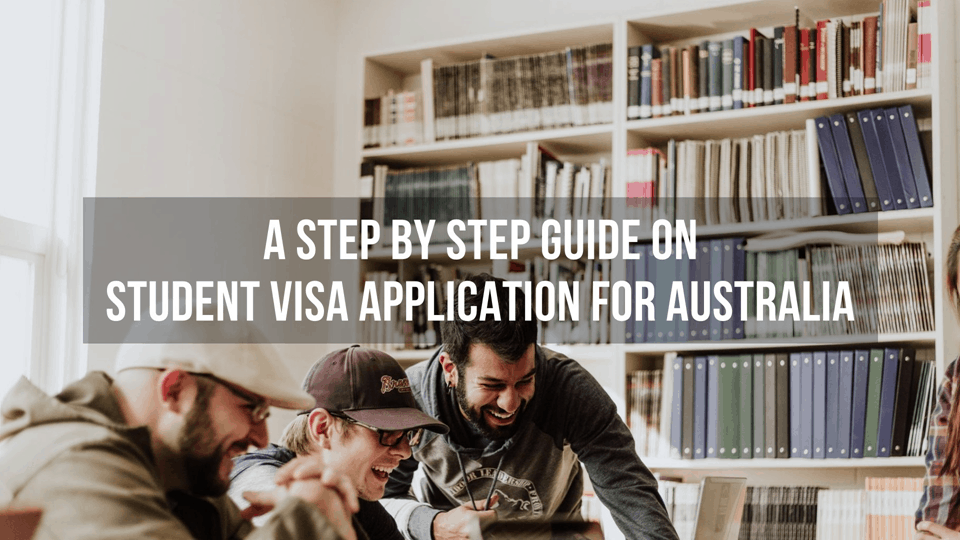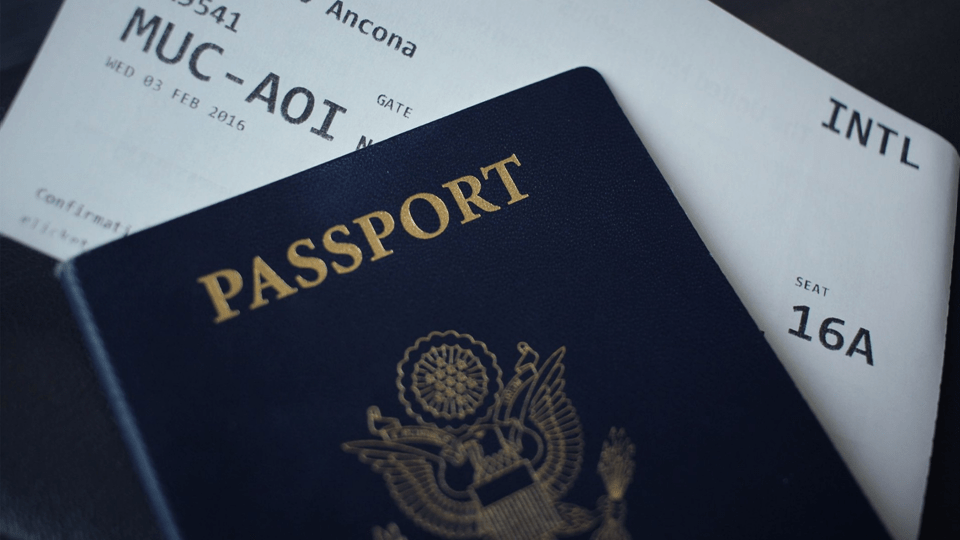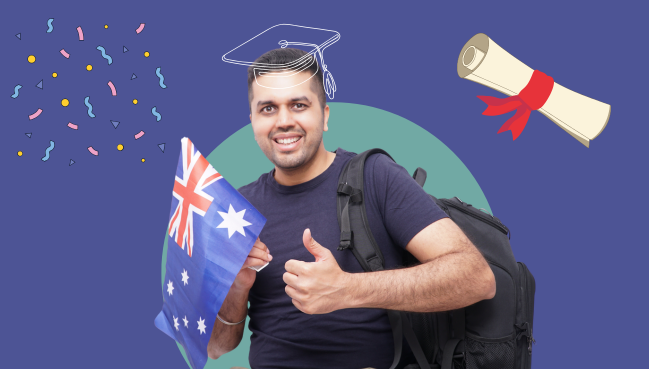A step by step guide on student visa application for Australia

Many international students make the choice to study in Australia and one of the first questions that come in the mind is how do I apply for studying in Australia. In this detailed step by step guide, we will help you understand a student visa application for Australia.
We are going to break it down into various sections to make it easy for you to understand what you should be doing for applying for a student visa.
Step 1: Understanding the requirements for studying in Australia

If you are planning to study in Australia, then there are some key study requirements that you need to meet before you can apply for the student visa. We have categorised these requirements into three main areas:
-
Academic
- Good academic records
- Meeting the prerequisites of the course
- English tests scores
- Minimum Age Requirements
- Work experience
- Research work/Thesis
-
Financial
- Course Fee
- Living expenses
- OSHC (Health Insurance)
- English test fees
- Visa application fee
- Medical Check-up fee
- Airfares
-
Immigration
- Passport
- Genuine Temporary Entrant (GTE)
- Health requirements
- Character requirements
- Financial requirements
Step 2: The admission process

International students find it quite confusing and challenging in understanding the admission process. To make it simpler for you, we have divided it 5 main steps:
- The first step is to choose the area you would like to study eg. Business, Accounting, Engineering IT, Hospitality, Healthcare
- Then you would need to choose the level you would like to study e.g Certificate, Diploma, Advanced Diploma, Bachelor Degree, Graduate Diploma/Certificate, Master Degree or Doctorate. You can understand the Australian education system by checking this infographic.
- The next step is to choose the city where would you like to study e.g Sydney, Melbourne, Brisbane, etc.
- Then choose the type of institution you would like to study – University, Tafe or a Private College
- Last but not the least, choose the timing/intake you would like to enrol in – February, July, and November but some private colleges or Tafes may have a year around enrollments
Step 3: Applying for COE

Here are the key steps for applying for a Confirmation of Enrolment (COE):
- Write an impressive statement of purpose on why you would like to study, especially required for higher education programs.
- As most of the institution will require some of form of evidence of your English capabilities (unless you come from the English speaking country) it is advisable to get your IELTS, PTE or TOEFL test done before the submission of your application form.
- Complete and submit the application form for the institute you are planning to study with required documents.
- Don’t forget to check if you are eligible for some scholarships before sending your application form.
- If you haven’t finalised yet, you can apply for multiple institutes at the same time.
- Institute may ask for more documents or for an interview via telephone or skype
- After the institute is satisfied with your submission, they will send you an offer letter.
- Read the offer letter and terms and conditions and if happy with them, you will need to pay the fees as mentioned in the offer letter. Most of the Australian educational institutions will require you to pay the first term or semester fee only.
- Once the institute receive your payment, they will issue a COE (Confirmation of Enrolment)
Step 4: Documents required for the Student Visa application

While applying for a student visa for Australia, you will need to have few documents ready for your institute and immigration department. Here you will find the list of the documents you need to submit as a part of your student visa application:
- Passport
- 4 Recent passport-sized photos
- Birth certificate and national identification
- Confirmation of Enrolment(CoE)
- Form 157A
- OSHC evidence of payment
- IELTS or PTE or other English test results
- Statement for Genuine Temporary Entrant
- Evidence of funds (eg Bank statements etc)
- Academic records like certificates
- Police clearance certificate
- Work record like pay slips, tax returns
- Evidence of your relationship with your spouse like a marriage relationship
- Evidence of relationship with your children
- Guardian and Welfare arrangements evidence for under 18’s
The list given above covers all the major documents you may need for the student visa application. You may need to provide less or more documents when lodging a students visa application depending on your individual circumstances. Make sure to get these documents attested or certified before submission. If the documents are not in English then you will need to get it translated to English.
Do not provide any false, misleading information to the immigration as if they catch that, you might be banned from applying for any visa for Australia. This may also affect your visa application for other countries as well.
Step 5: Student Visa Application

You will need to complete all the required documents and submit the application with the applicable fees. The current visa fee is $575 but it usually changes every year. So it is a good idea to confirm that with the Australian immigration’s website.
The application can be submitted online or using paper format. The application can be done by yourself or by your consultants or agent. You must submit your application at least 12 weeks before the course start date.
Once lodged, it can take a few days to weeks to get the visa. On average it may take up to 4 weeks to get a visa but it might even take longer time depending on a few factors. The Australian government will issue you a Transaction Reference Number (TRN) once they receive the completed application. TRN will help you track the progress of your application.
If immigration requires more information or documents then they will notify you and you will need to get back to them with that within the given timeframes. As immigration department needs to verify that you are genuinely coming to Australia for study only, they can conduct an interview usually via telephone.
What kind of questions the department officers may ask?
The interview is usually conducted by trained officers and they may ask various types of questions but most of them will be related to verifying some of your details and intended purpose of traveling to Australia. The interview usually lasts around 10 to 15 mins. Some of the typical questions that the officer may ask are:
- What is the purpose of traveling to Australia?
- What qualifications do you hold?
- Why do you want to study in Australia?
- Why you would not like to study a similar course in your home country?
- Have you ever visited Australia before?
- Do you have any family or relatives living in Australia?
- How did you find your study institution?
- Why do you want to study at that specific institute?
- Where is this institute located?
- Please give more details about the course you are intending to study?
- How this course will help your career?
- What is the course start date and end date of the course?
- What is the cost of the course?
- What is the refund policy for this institute?
- Who will sponsor your study?
- What is your income or family income?
- How you will ensure that you will go back home after studying in Australia?
- What if your visa is refused?
- What is OSHC (Overseas Students Health Cover)?
- Why it is necessary for overseas students to take OSHC?
Step 6: Visa Outcomes

The immigration department will make final decisions on your application and will notify you or your nominated agent by email. If you have been granted a visa then you will need to start preparing for Australian arrival.
If unfortunately, your application is rejected by the immigration department then you may have a chance to appeal against the decision to Administrative Appeals Tribunal (AAT). If you believe that your visa application was refused unfairly then you will need to prepare and present your case to AAT. This process can be challenging and you might need help from a lawyer who understands the Australian migration law well.
For most cases, students will need to re-apply for the student visa if they still intend to study in Australia.
Why your visa has been rejected
While there can be various reasons why immigration can refuse your visa but some of the most common reasons for refusing the student visas for Australia are:
- Failing to provide the correct documents
- Misleading, bogus or fraudulent information
- Choosing a course that might not be relevant to the previous studies
- Lack of research into the prospective institute
- Unable to demonstrate the required funds for studying
- No solid plans after studying in Australia
- Failing the medical examination
- Not satisfying the Genuine Temporary Entrant requirements
Well, we hope this guide gives you a complete picture of how to prepare for your student visa application better. We would love to hear your thoughts, experiences, and feedback on a student visa application in the comments below.



